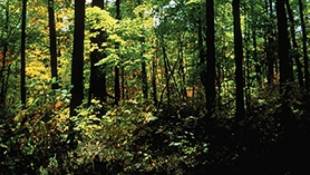Bats carry a negative reputation through most of the world. This week, scientists announced a theory that bats are the cause of the rapid spread of the Ebola virus that is devastating regions of Africa. But Ball State associate professor Tim Carter says bats play a critical role in our ecosystem.
“We do know for a fact that bats, and the bats here in Indiana, do consume all kinds of insects, including a lot of crop pests – spotted cucumber beetle, corn ear worm," Carter said. "It’s been estimated that U.S. farmers save billions of dollars in pesticide applications because these bats are taking care of the insects for them.”
Since 2006, bats have been dying from what the U.S. Geological Survey is calling “white nose syndrome” – a fungus that grows in cold temperatures on hibernating bats. Carter says it causes a bothersome itch and likens it to athlete’s foot. But that itch is so troublesome to the bats that its effects are deadly for up to 97 percent of bats that are infected.
“It does all kinds of things to their physiology and to their behavior that causes them to wake up from hibernation and use up their fat reserves," Carter said. "White nose doesn’t kill bats. Bats die because they run out of energy because they keep waking up throughout the winter. They’re not dying of the disease, they’re dying of starvation.”
What Carter and his colleagues are testing is not a cure for the white nose syndrome fungus – which he says would take significantly more research, time, and money to develop. The scientists are using a naturally occurring compound found in things like the exoskeletons of shrimp and crabs to treat the fungus so that bats can survive its effects. The study’s first phase monitored how the substance controlled the effects of the fungus. Carter says phase two will focus on how to best apply the substance to the bats themselves.
“This chitosan is actually in a liquid solution. It’s not quite as thick as syrup – maybe like a warm syrup or something. And what we did was literally dip the bat’s wing in there and we sprayed a little bit on their face and on their body," Carter said. "So they were really drenched in this stuff and it is kind of a thick, sticky, kind of a syrup, so that was one of the problems. So what we’re going to do now is we’re going to try to dilute it.”
The next phase of Carter’s study will focus on a hibernation cycle of a group of bats, which runs from October through March.
 DONATE
DONATE



 View More Programs
View More Programs


 Support WFYI. We can't do it without you.
Support WFYI. We can't do it without you.